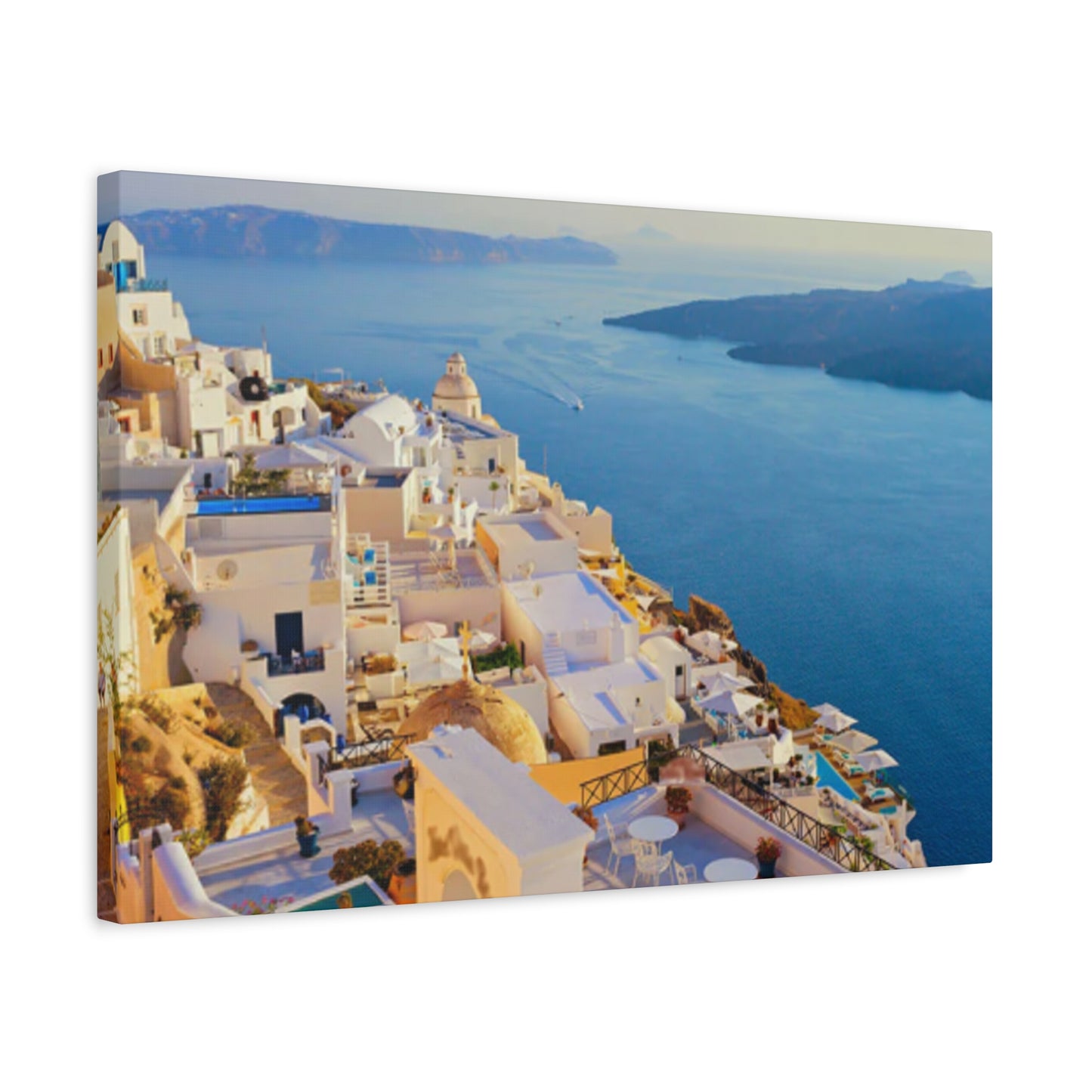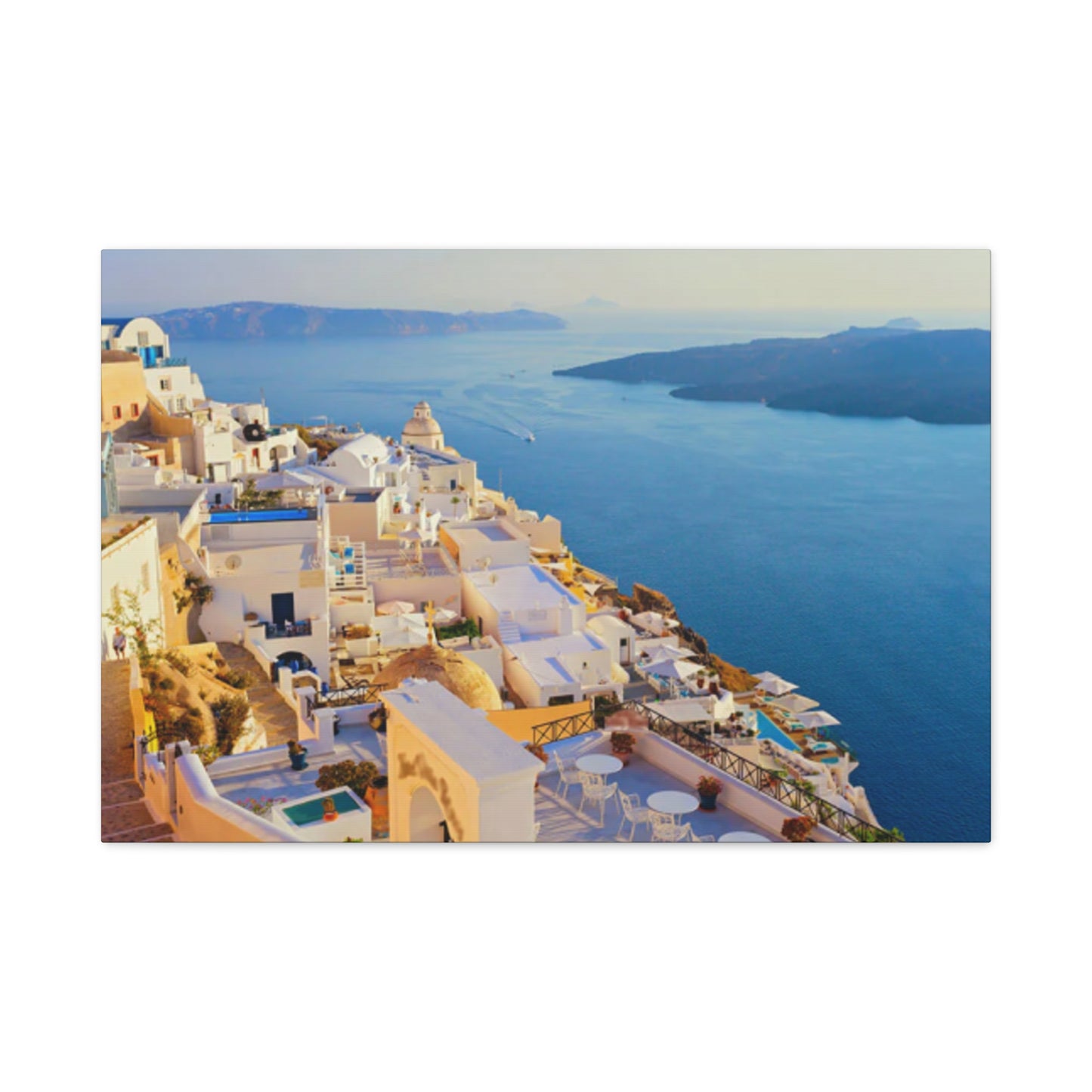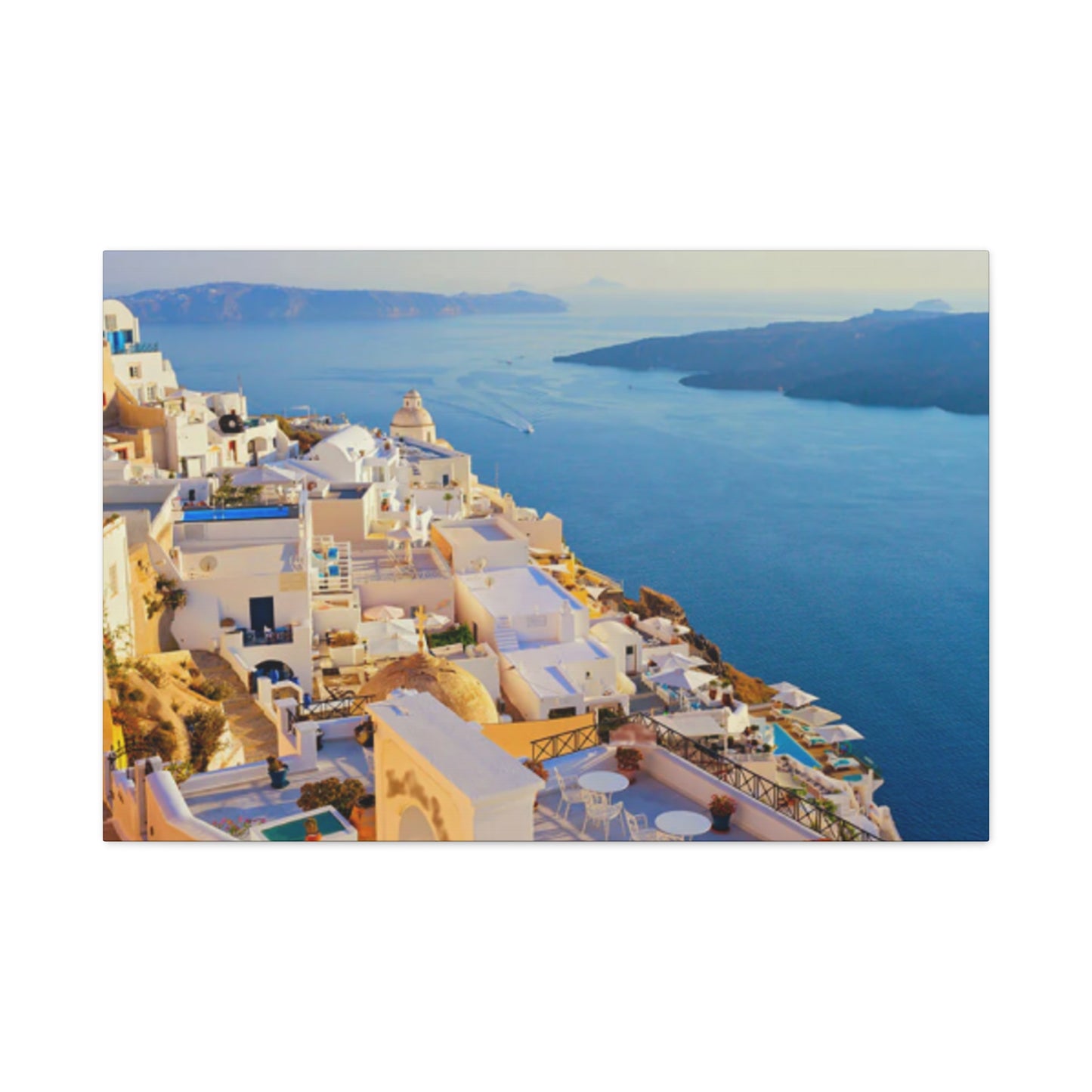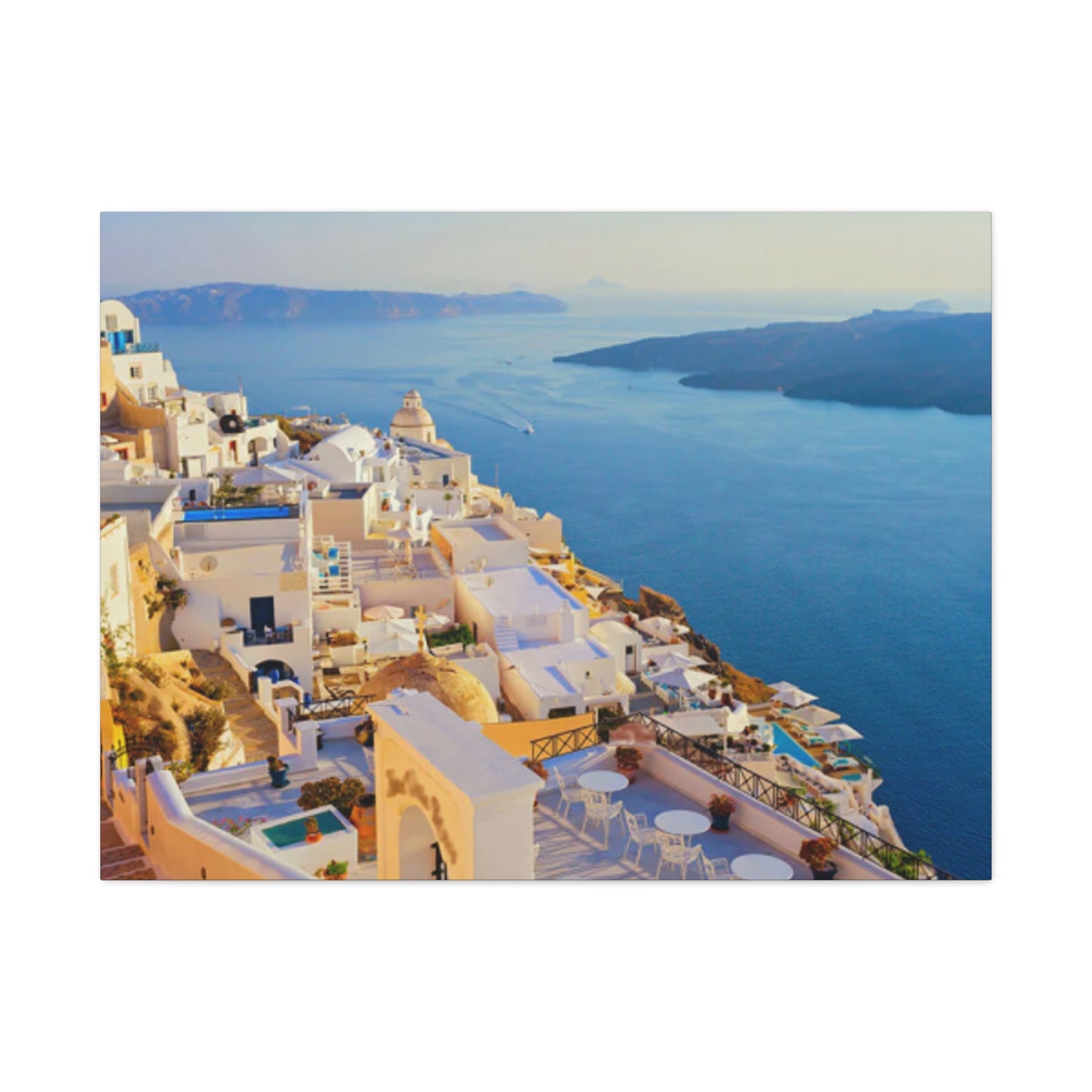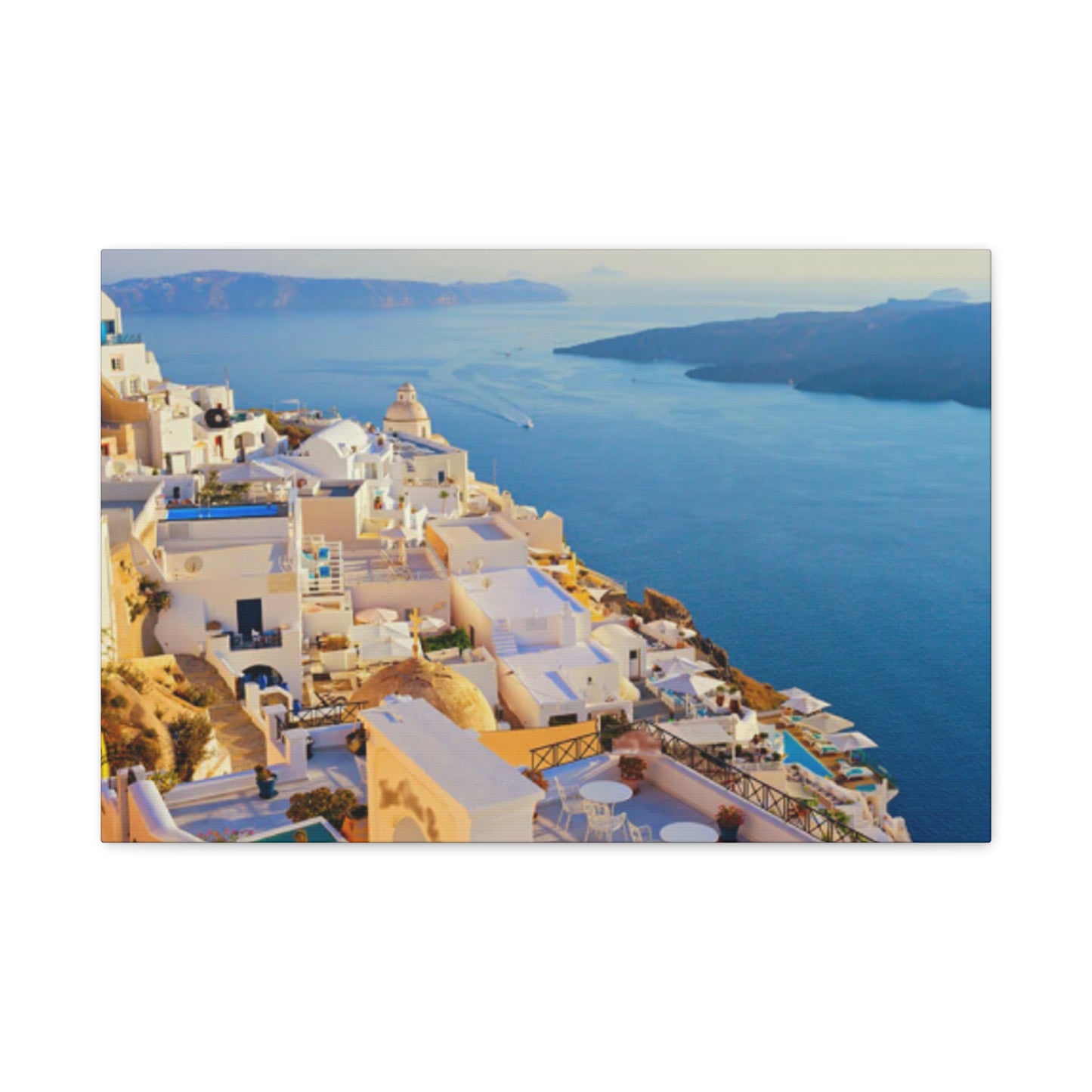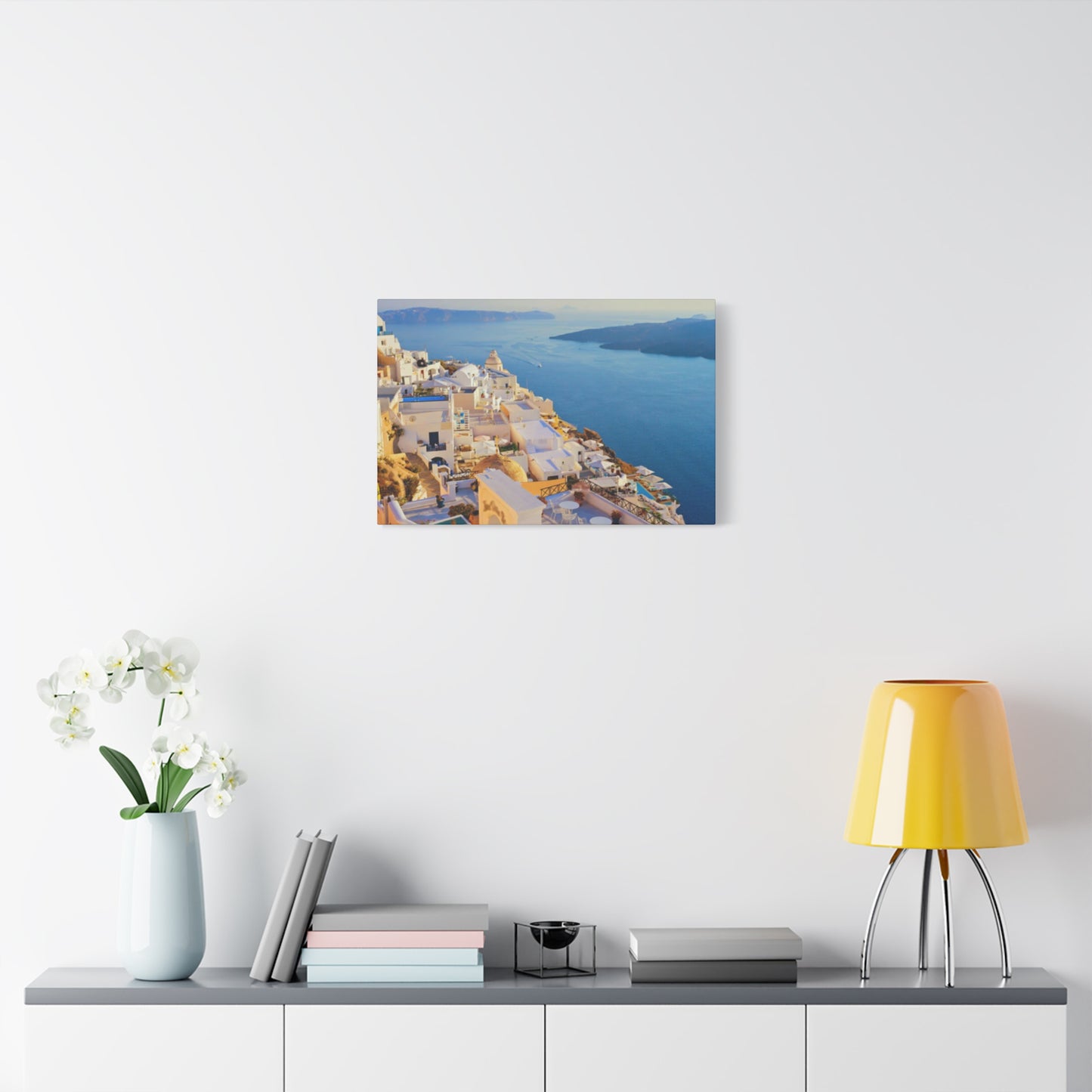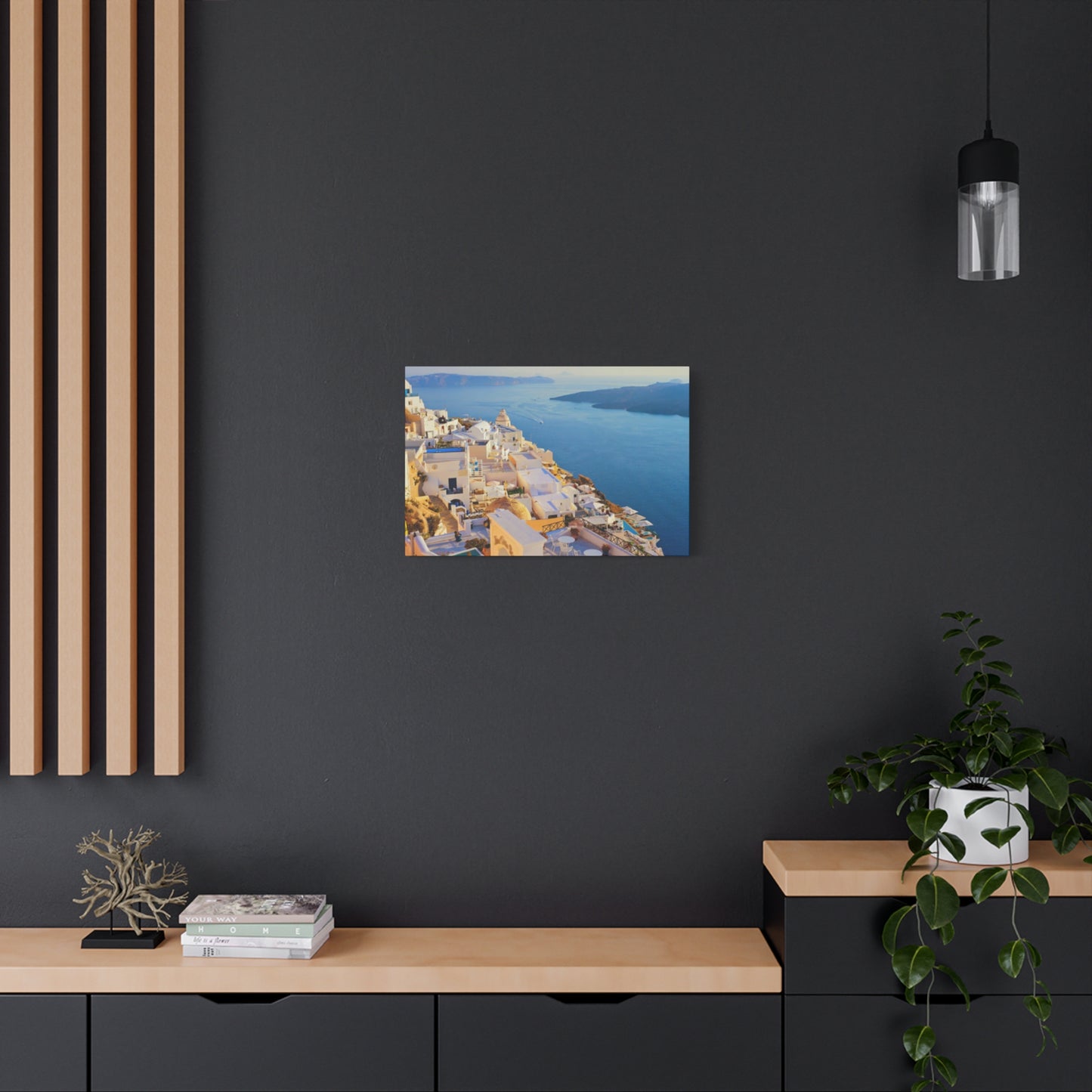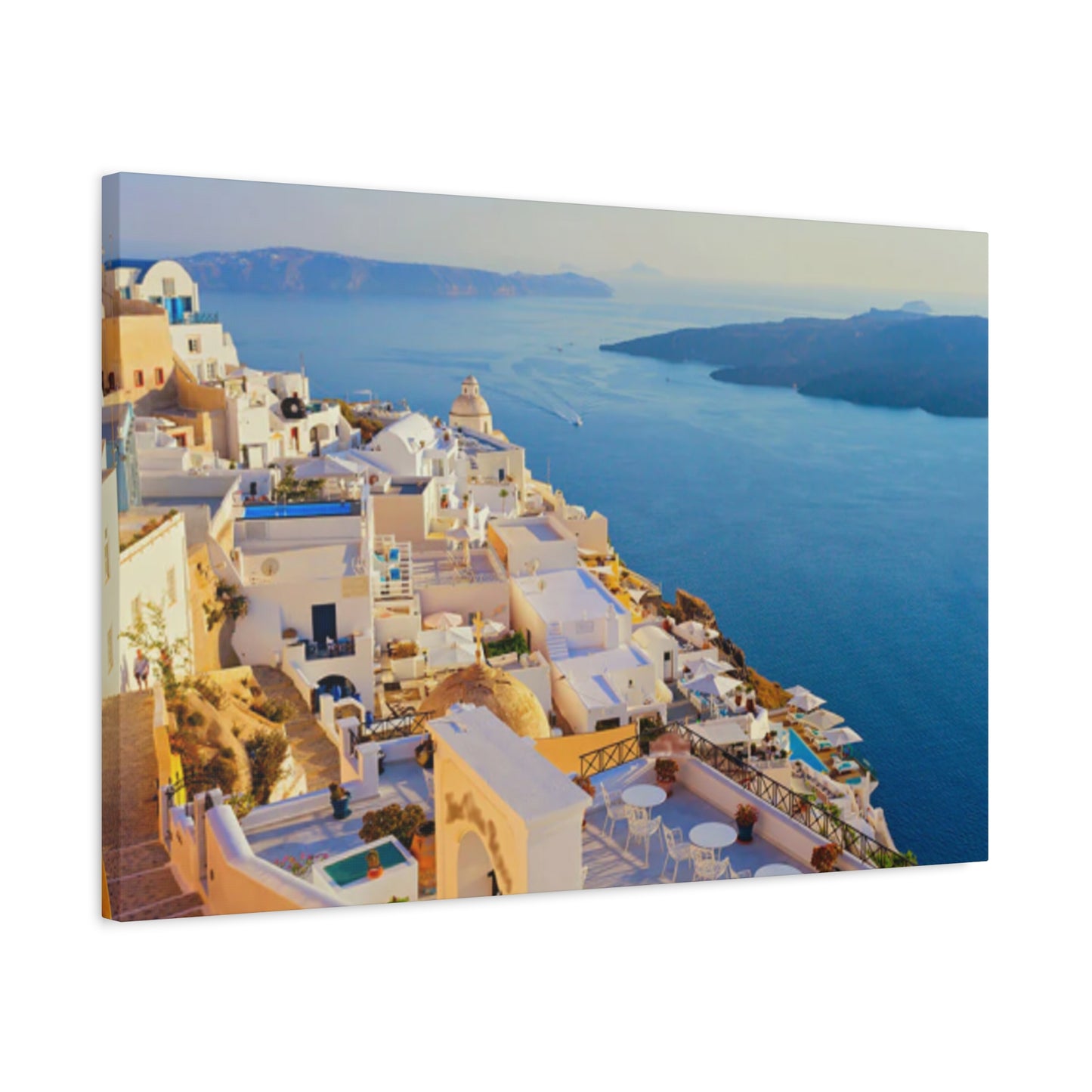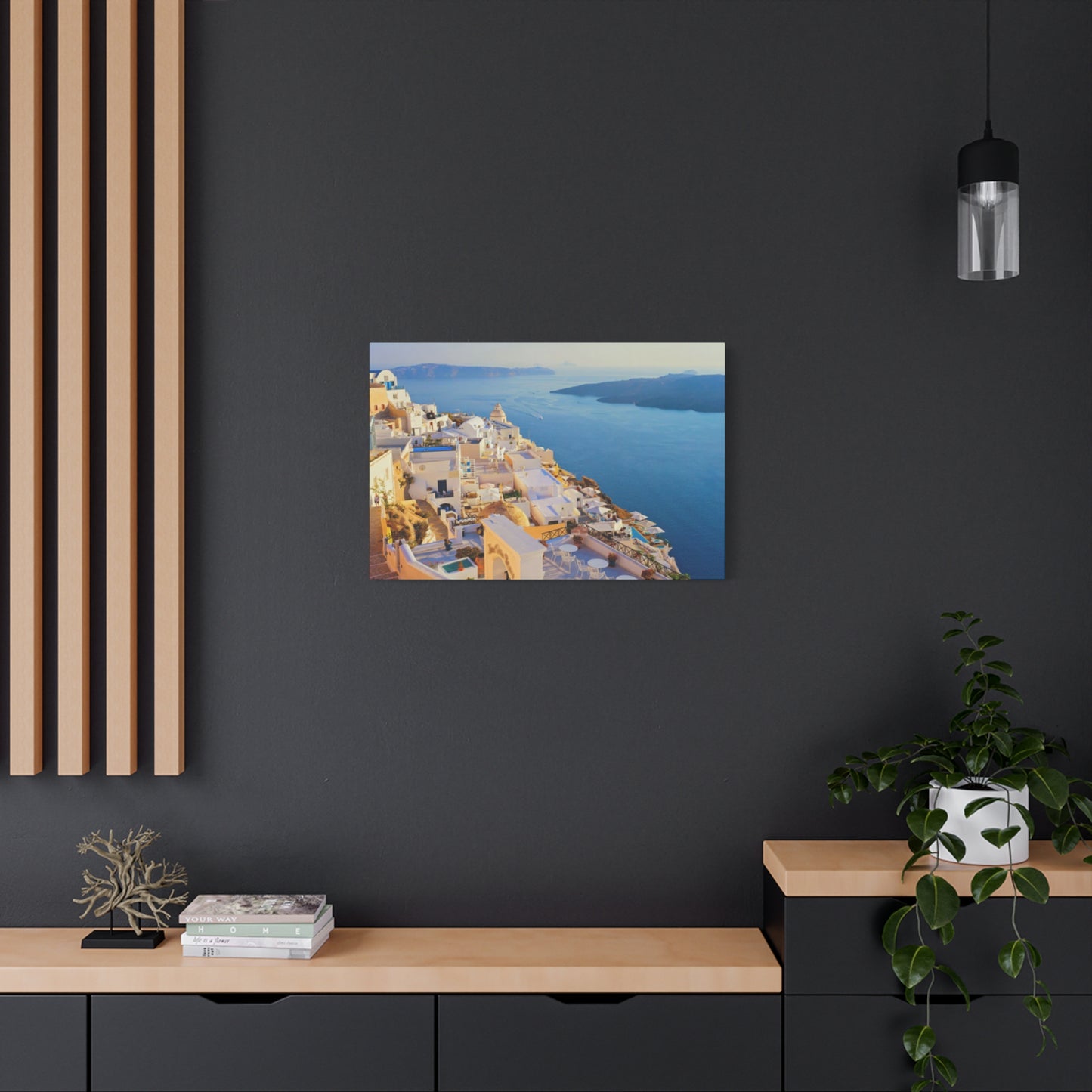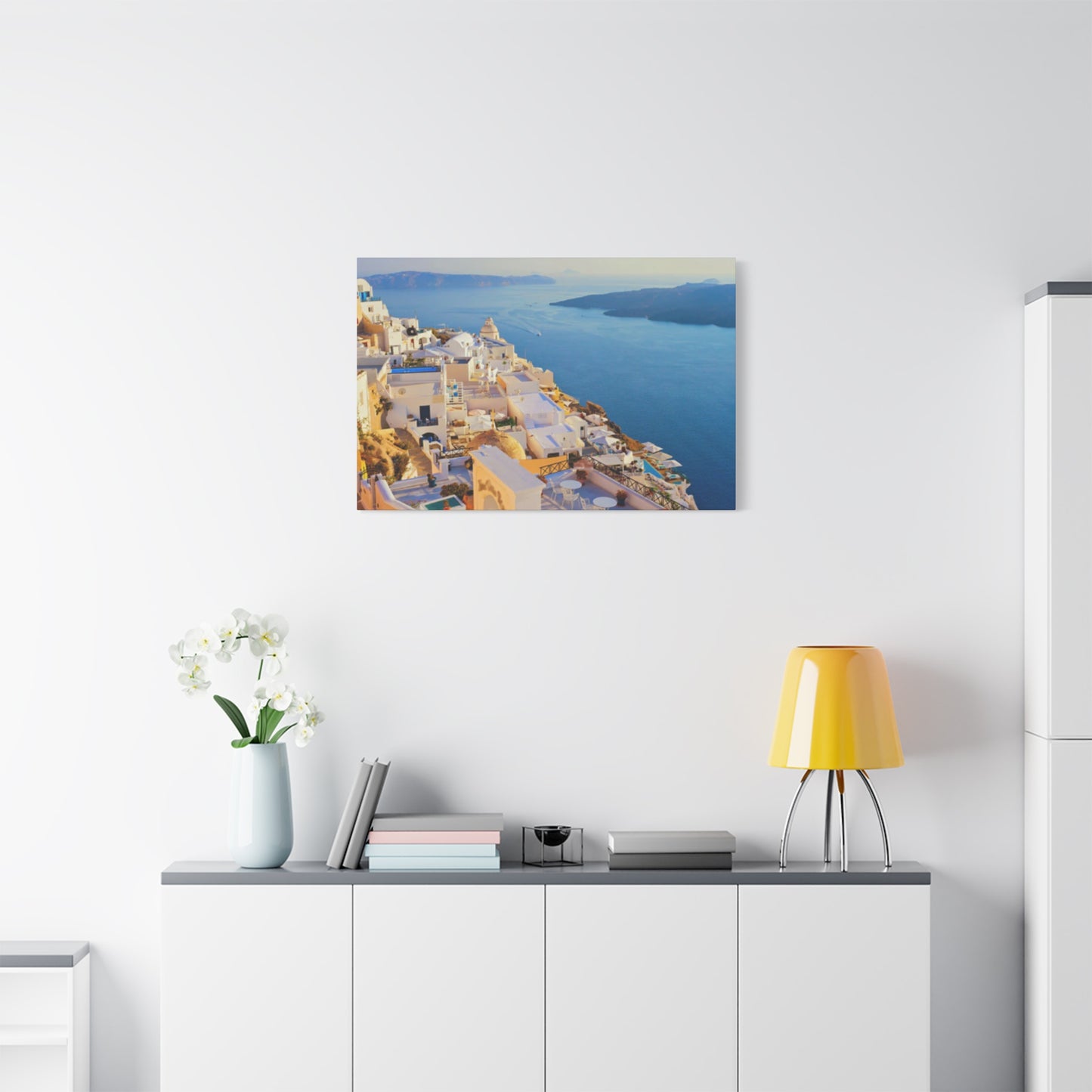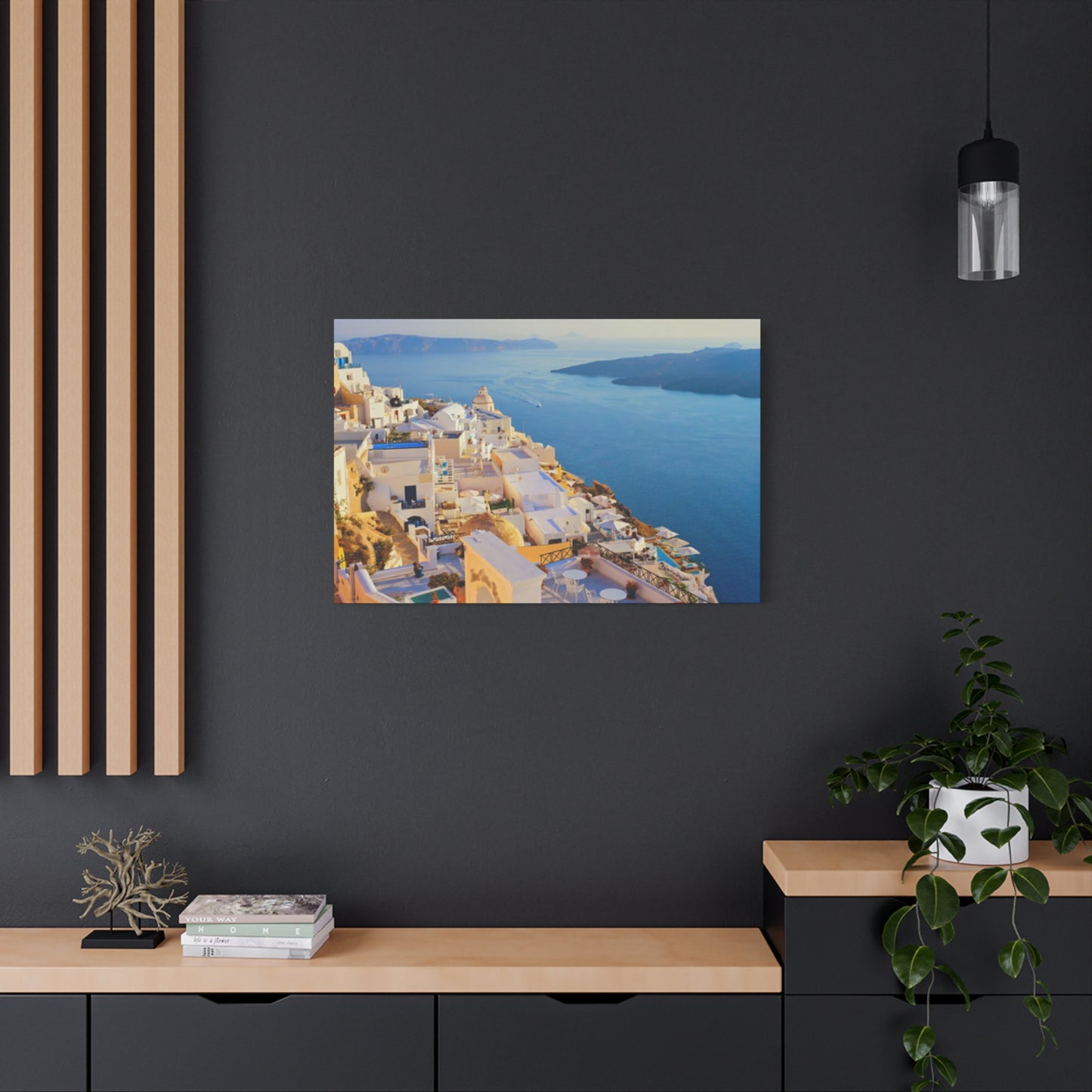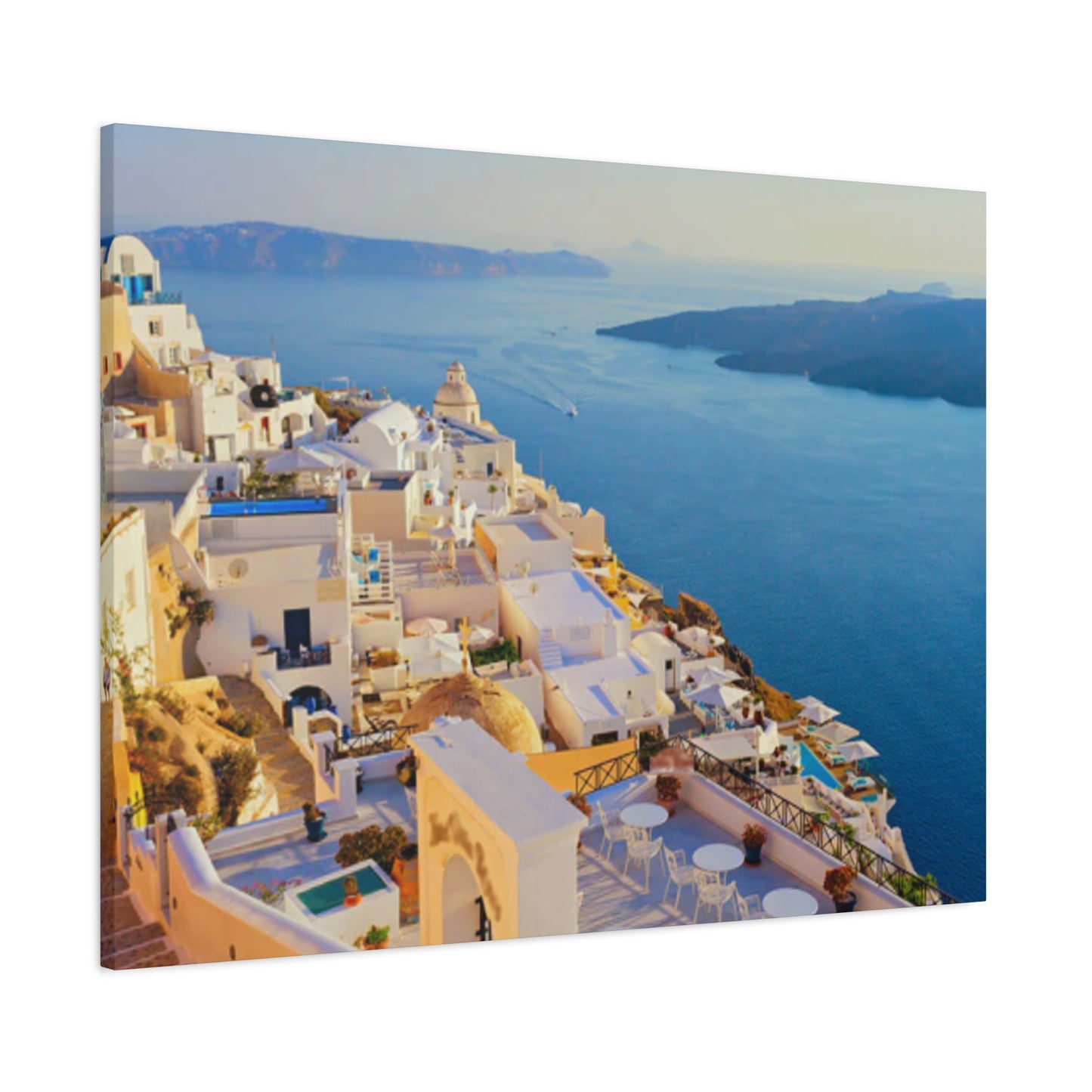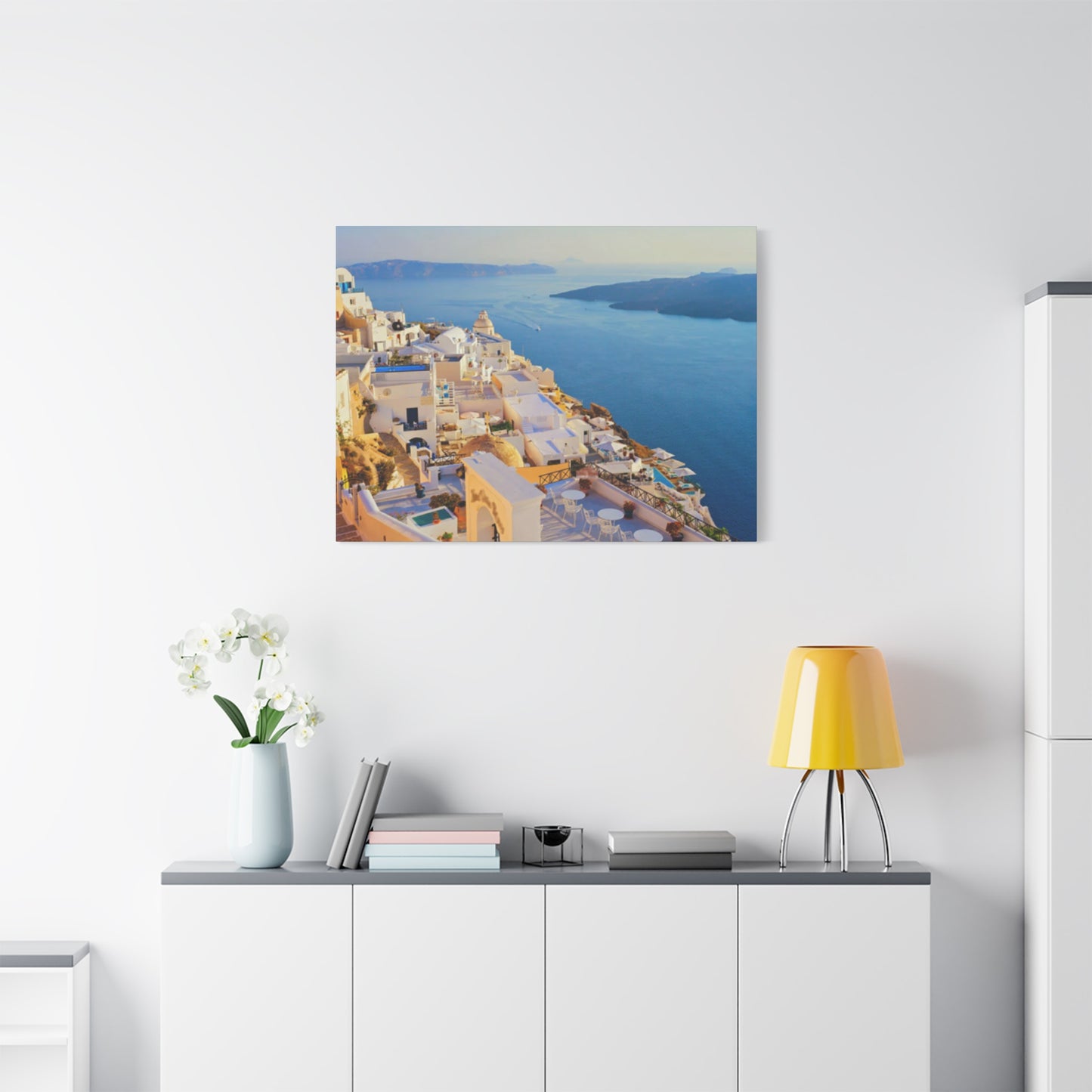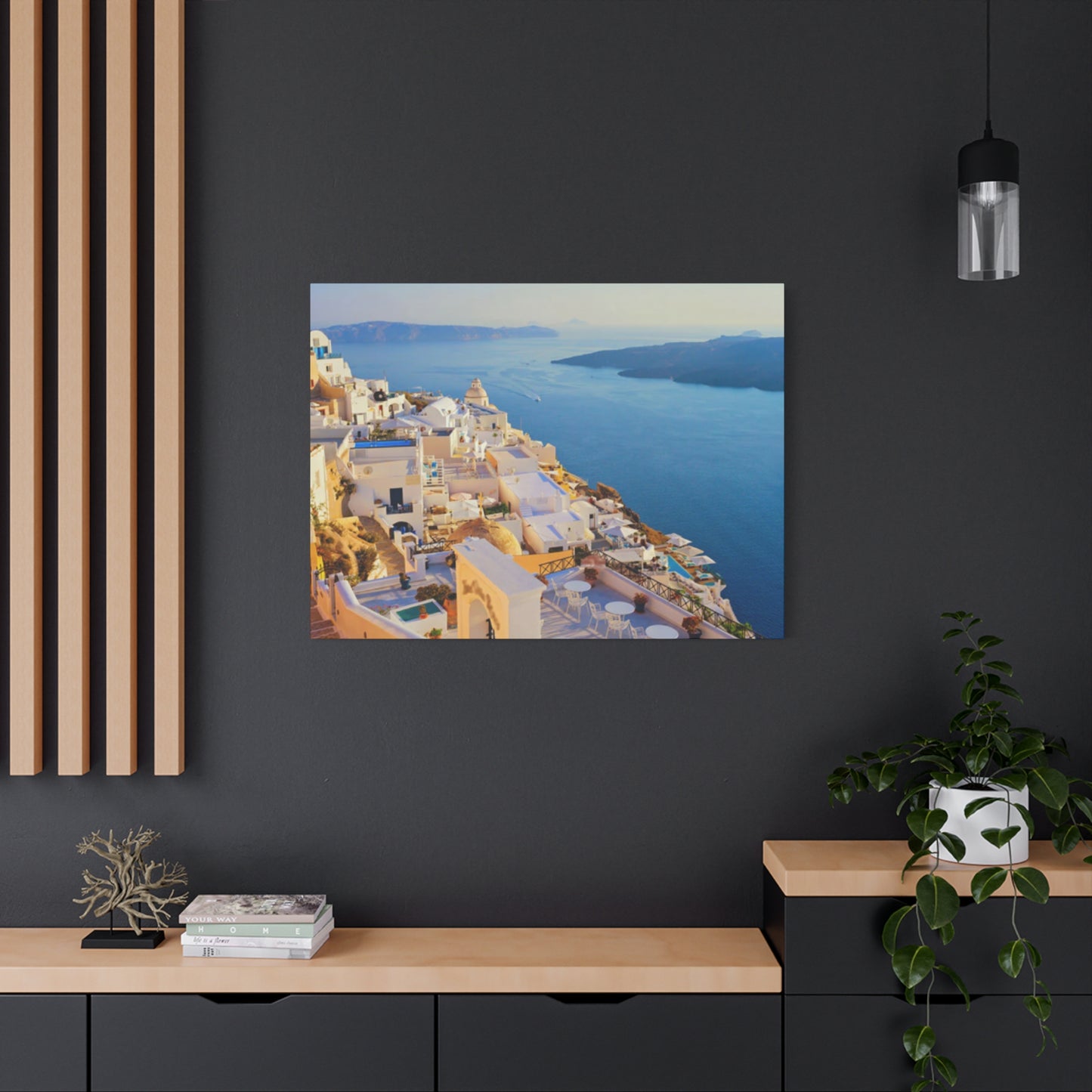The Allure of Turquoise Waters: Greece Sea Wall Art Inspirations
The mesmerizing allure of the ocean has captivated humanity for centuries, and now you can bring that same enchanting beauty directly into your living environment through carefully selected maritime artwork. Ocean-inspired wall art offers an incredible opportunity to transform any room into a serene coastal retreat, regardless of your distance from the nearest shoreline. From the gentle lapping of waves against pristine beaches to the dramatic power of stormy seas, maritime artwork captures the full spectrum of oceanic moods and emotions.
Whether you're seeking to create a peaceful sanctuary in your bedroom, add visual interest to your living room, or establish a calming atmosphere in your office, ocean-themed artwork provides endless possibilities for enhancing your surroundings. The versatility of marine-themed pieces allows them to complement various decorative styles, from traditional coastal aesthetics to contemporary minimalist approaches.
This comprehensive exploration will guide you through the vast world of oceanic artwork, helping you discover the perfect pieces to reflect your personal taste while creating the atmosphere you desire. We'll delve into popular themes, color schemes, artistic styles, and practical considerations that will enable you to make informed decisions about incorporating maritime beauty into your home.
Trending Ocean Scenes for Home Decoration
The world of oceanic artwork encompasses an extraordinary range of subjects and styles, each offering unique visual appeal and emotional resonance. Contemporary homeowners are increasingly drawn to specific marine themes that not only enhance their living environments but also reflect their personal connection to the ocean's majesty.
Dramatic seascapes featuring towering waves crashing against rocky cliffs have become increasingly popular among art enthusiasts seeking to bring dynamic energy into their homes. These powerful compositions capture the raw force of nature, creating focal points that command attention and spark conversation. The interplay of light and shadow in such pieces often creates depth and movement that can make smaller rooms feel more expansive.
Peaceful harbor scenes offer a contrasting approach, presenting tranquil waters dotted with sailboats and fishing vessels. These compositions evoke feelings of serenity and nostalgia, making them perfect for creating restful atmospheres in bedrooms or reading areas. The gentle colors and soft lines typically found in harbor artwork contribute to a sense of calm that many find therapeutic after busy days.
Underwater landscapes have gained significant popularity as homeowners seek more unique and immersive oceanic experiences. These pieces transport viewers beneath the surface, revealing coral gardens, schools of tropical fish, and mysterious deep-sea environments. The vibrant colors and exotic subject matter make underwater themes particularly effective in children's rooms or creative workspaces where imagination should flourish.
Storm-tossed seas represent another compelling category, appealing to those who appreciate drama and intensity in their artwork. These pieces often feature dark, moody skies contrasted with white-capped waves, creating striking visual impact that works particularly well in larger rooms with high ceilings. The emotional intensity of storm scenes can add sophistication and depth to contemporary living environments.
Pristine tropical beaches with crystal-clear waters and palm-fringed shorelines continue to attract homeowners seeking escapist themes. These idyllic scenes transport viewers to paradise, making them excellent choices for creating vacation-like atmospheres in any room. The bright, cheerful colors typical of tropical beach scenes can help brighten darker corners while adding warmth to cooler environments.
Peaceful Shoreline Views in Maritime Artwork
The gentle beauty of coastal landscapes holds particular appeal for those seeking to create tranquil, restorative environments within their homes. Peaceful shoreline imagery captures the soothing rhythm of waves meeting sand, offering viewers a visual escape that promotes relaxation and mental clarity.
Sunrise and sunset beach scenes represent some of the most beloved subjects in coastal artwork. These pieces typically feature warm golden and orange hues stretching across expansive skies, reflected in wet sand and gentle waves. The soft, diffused lighting characteristic of dawn and dusk creates an inherently calming effect that makes these pieces ideal for bedrooms, meditation areas, or any location where peaceful contemplation is desired.
Empty beaches stretching toward distant horizons evoke feelings of solitude and infinite possibility. These minimalist compositions often feature subtle color palettes dominated by soft blues, warm sands, and pale skies. The simplicity of such scenes makes them particularly versatile, allowing them to complement a wide range of decorative styles while providing focal points that don't overwhelm surrounding furnishings.
Tidal pool environments offer fascinating glimpses into miniature oceanic worlds, featuring rocky formations, shallow pools, and small marine creatures. These detailed compositions invite close examination and discovery, making them excellent conversation pieces for entryways or living areas. The intricate natural patterns and textures found in tidal pool scenes can add visual interest without introducing overwhelming complexity.
Dune landscapes with sea grass swaying in ocean breezes capture the transitional zone between land and sea. These pieces often feature soft, muted colors and gentle textures that create peaceful, contemplative atmospheres. The organic curves and natural rhythms depicted in dune scenes can soften harsh architectural lines while adding natural beauty to contemporary environments.
Misty coastal mornings provide ethereal subjects that seem to float between reality and dreams. These atmospheric pieces often feature fog-shrouded shorelines, creating mysterious and romantic moods that work particularly well in intimate settings. The soft, diffused quality of misty coastal scenes can help create cozy atmospheres while maintaining connection to oceanic themes.
Abstract Versus Realistic Marine Artwork
The choice between abstract and realistic approaches to marine artwork significantly impacts both visual effect and emotional resonance. Understanding the characteristics and benefits of each style enables homeowners to select pieces that best align with their aesthetic preferences and decorative goals.
Realistic marine artwork aims to capture oceanic subjects with photographic accuracy, emphasizing natural colors, precise details, and recognizable forms. This approach appeals to viewers who appreciate technical skill and want artwork that clearly represents specific oceanic scenes or creatures. Realistic pieces often serve as windows to marine environments, allowing viewers to experience distant or inaccessible oceanic locations from the comfort of their homes.
The advantage of realistic marine artwork lies in its immediate accessibility and universal appeal. Viewers can quickly identify and connect with familiar oceanic elements, making these pieces excellent choices for public areas or homes with diverse aesthetic preferences. Realistic artwork also tends to maintain its appeal over time, as the natural beauty it captures remains timelessly attractive.
Abstract marine artwork, conversely, interprets oceanic themes through simplified forms, stylized colors, and expressive techniques that prioritize emotional impact over literal representation. These pieces capture the essence, movement, and feeling of marine environments rather than their precise appearance. Abstract oceanic artwork often features bold color choices, dynamic brushstrokes, and innovative compositions that create powerful visual statements.
The strength of abstract marine artwork lies in its ability to evoke emotions and memories without being constrained by realistic representation. Viewers can project their own oceanic experiences and interpretations onto abstract pieces, creating personal connections that may deepen over time. This interpretive quality makes abstract marine artwork particularly suitable for contemporary environments where individual expression and artistic sophistication are valued.
Semi-abstract approaches combine elements of both styles, maintaining recognizable oceanic references while allowing for creative interpretation and stylistic freedom. These hybrid pieces often feature simplified forms with enhanced colors or exaggerated proportions, creating artwork that is both accessible and artistically interesting. This middle ground appeals to many homeowners who want oceanic subjects with contemporary artistic treatment.
Contemporary marine artwork increasingly blurs the lines between abstract and realistic approaches, incorporating photographic elements with painted or digital manipulation. These innovative pieces create unique visual experiences that combine the immediate recognition of realistic imagery with the creative freedom of abstract expression. Such contemporary approaches often resonate with modern homeowners who appreciate both traditional oceanic beauty and cutting-edge artistic techniques.
Utilizing Azure Hues to Amplify Marine Artwork
The strategic use of blue tones in oceanic artwork creates profound visual and psychological effects that can dramatically enhance both individual pieces and entire decorative schemes. Understanding how different shades of blue function within marine artwork enables homeowners to select pieces that create desired atmospheres while harmonizing with existing color palettes.
Deep navy blues evoke the mysterious depths of open oceans, creating dramatic and sophisticated visual statements. These rich, dark tones work particularly effectively in larger pieces where their intensity can be properly appreciated without overwhelming surrounding elements. Navy-dominated oceanic artwork pairs beautifully with neutral color schemes, providing striking focal points while maintaining elegant restraint.
Turquoise and aqua tones capture the crystal-clear waters of tropical seas, bringing brightness and energy to marine artwork. These vibrant blues create uplifting, cheerful atmospheres that can help brighten darker rooms while adding refreshing color accents. Turquoise-heavy pieces work exceptionally well in contemporary settings where bold color choices are celebrated.
Powder blue and soft blue-gray tones create gentle, calming effects reminiscent of misty mornings and peaceful lagoons. These subtle hues provide soothing backdrops for relaxation areas while maintaining clear connections to oceanic themes. Soft blue marine artwork integrates seamlessly with neutral decorative schemes without demanding excessive attention.
Steel blue and slate tones capture the moody beauty of stormy seas and overcast coastal days. These sophisticated colors create contemplative atmospheres while adding depth and complexity to marine artwork. The muted intensity of steel blue tones makes them particularly suitable for professional environments or sophisticated residential settings.
The layering of multiple blue tones within single pieces creates depth and visual interest that mimics the natural complexity of oceanic environments. Artwork featuring graduated blue tones, from deep navy depths to pale sky blues, can create compelling illusions of distance and atmosphere. These complex color relationships add sophistication while maintaining the calming effects associated with blue-dominated palettes.
Complementary color relationships enhance blue-dominated marine artwork through strategic use of warm accent tones. Orange and coral hues, often found in sunset scenes or tropical fish, create vibrant contrasts that make blue tones appear more luminous. These warm accents prevent blue-heavy artwork from feeling cold while adding visual excitement and dynamic energy.
Expansive Canvas Prints Featuring Ocean Waves
Large-scale oceanic artwork creates commanding presence that can transform entire rooms while providing immersive experiences that smaller pieces cannot achieve. The impact of expansive wave imagery extends beyond mere decoration, creating emotional connections and atmospheric changes that significantly enhance living environments.
Panoramic wave scenes capture the horizontal sweep of oceanic vistas, making them particularly effective for wide wall areas above sofas, beds, or dining tables. These horizontal compositions emphasize the endless nature of oceanic horizons while creating visual balance in rooms with low ceilings. The expansive format allows for detailed wave textures and atmospheric effects that draw viewers into the scene.
Vertical wave compositions emphasize the towering power and majesty of ocean swells, creating dramatic vertical elements that can enhance rooms with high ceilings. These upward-reaching formats work particularly well in entryways, stairwells, or any location where vertical emphasis is desired. The upward movement inherent in vertical wave imagery can make rooms feel taller while adding dynamic energy.
Multi-panel wave installations allow for even greater visual impact while providing flexibility in arrangement and sizing. Triptych and multi-panel formats can wrap around corners or extend across multiple wall sections, creating immersive environments that surround viewers with oceanic beauty. The modular nature of multi-panel installations also allows for creative arrangements that can adapt to changing decorative needs.
The texture and surface quality of large canvas prints significantly impact their visual effect and perceived value. High-quality canvas materials with appropriate tooth and texture enhance the organic nature of wave imagery while providing durability for long-term display. The physical texture of canvas surfaces interacts with lighting to create subtle variations in appearance throughout the day.
Large-scale wave imagery requires careful consideration of viewing distance and room proportions to achieve optimal visual impact. Pieces that work beautifully in spacious rooms may overwhelm smaller environments, while artwork scaled for intimate settings may appear insignificant in large rooms. Understanding the relationship between artwork size and room dimensions ensures selections that enhance rather than dominate their surroundings.
Lighting considerations become particularly important with large-scale oceanic artwork, as improper illumination can diminish impact while appropriate lighting can dramatically enhance visual effect. Natural lighting from windows can create changing effects throughout the day, while artificial lighting allows for controlled dramatic impact. The interplay between lighting and large wave imagery can create compelling focal points that anchor entire decorative schemes.
Enhancing Rooms with Beach and Coastline Artwork
Beach and coastline imagery offers versatility and broad appeal that makes it suitable for virtually any room while providing the flexibility to create diverse atmospheric effects. The natural beauty and universal accessibility of coastal scenes enable homeowners to incorporate oceanic themes without committing to highly specialized or dramatic aesthetic directions.
Living room applications of beach artwork often focus on creating welcoming, relaxed atmospheres that encourage conversation and comfort. Large beach scenes positioned above seating areas provide focal points that establish room themes while offering pleasant views for daily enjoyment. The typically bright, cheerful nature of beach imagery helps create positive, uplifting environments where families and guests feel comfortable gathering.
Bedroom installations of coastline artwork emphasize peaceful, restful qualities that promote relaxation and sleep. Gentle beach scenes with soft colors and horizontal compositions work particularly well in bedrooms where calming effects are prioritized over dramatic visual impact. The association between beaches and vacation relaxation makes coastal bedroom artwork especially effective for creating retreat-like atmospheres.
Kitchen and dining area beach artwork often incorporates brighter, more energetic coastal scenes that complement the social nature of these environments. Tropical beach imagery with vibrant colors can add warmth and cheerfulness to kitchen environments while maintaining the fresh, clean associations that complement food preparation areas. Coastal dining room artwork creates pleasant backdrops for meal times while establishing casual, comfortable atmospheres.
Bathroom applications take advantage of the natural water connections inherent in beach artwork. Coastal scenes in bathrooms extend aquatic themes while providing visual interest in typically smaller environments. The humidity tolerance of properly prepared beach artwork makes it suitable for bathroom display, though proper sealing and mounting considerations remain important.
Home office integration of beach artwork can provide mental escape and stress relief during busy workdays. Peaceful coastline scenes offer momentary respites from professional demands while maintaining sophisticated appearance appropriate for video calls or client meetings. The balance between relaxation and professionalism makes beach artwork particularly suitable for home office environments.
Children's room beach artwork often emphasizes playful, colorful coastal scenes that capture the joy and wonder of beach experiences. Bright, cheerful beach imagery can stimulate imagination while providing positive, uplifting environments that support healthy development. The educational potential of beach artwork can introduce children to marine environments and conservation awareness.
Marine Wildlife in Artistic Displays: Dolphins, Whales & More
The magnificent creatures that inhabit our oceans provide compelling subjects for artwork that combines natural beauty with emotional connection. Marine wildlife artwork appeals to animal lovers while offering opportunities to introduce fascinating oceanic biodiversity into home environments through visually striking and educational displays.
Dolphin imagery remains among the most popular marine wildlife subjects due to these creatures' intelligence, playfulness, and universal appeal. Artwork featuring dolphins in their natural environments captures both their athletic grace and social nature, creating pieces that are simultaneously beautiful and emotionally engaging. Dolphin artwork works particularly well in children's areas, family rooms, or any location where joyful, positive energy is desired.
Whale artwork emphasizes the majesty and mystery of the ocean's largest inhabitants, creating dramatic focal points that command respect and wonder. Images of breaching whales, underwater whale encounters, or whale migration scenes provide powerful visual statements that work particularly effectively in larger rooms where their scale can be properly appreciated. The conservation message inherent in whale artwork adds meaningful depth beyond mere decoration.
Sea turtle artwork combines visual appeal with symbolic significance, as these ancient mariners represent wisdom, longevity, and environmental stewardship. Images of sea turtles gliding through coral reefs or nesting on beaches create peaceful, contemplative pieces that work well in meditation areas, bedrooms, or studies. The slower, more deliberate nature of turtle imagery provides calming effects that balance more dynamic oceanic subjects.
Tropical fish displays offer opportunities for vibrant color and intricate detail that can brighten any environment while showcasing oceanic biodiversity. Schools of colorful reef fish, individual species portraits, or coral reef ecosystems provide educational value while creating visually stunning artwork. The bright colors and exotic nature of tropical fish make them particularly suitable for contemporary environments where bold visual statements are appreciated.
Seabird artwork captures the freedom and grace of oceanic flight while providing links between marine and aerial environments. Images of pelicans, seagulls, albatrosses, and other seabirds in flight or coastal settings add dynamic movement to marine-themed displays. The upward motion inherent in bird imagery can lift viewers' spirits while maintaining connections to oceanic themes.
Shark imagery, when thoughtfully presented, can create powerful statements about oceanic apex predators while challenging common misconceptions about these important marine species. Artistic portrayals that emphasize sharks' natural grace and environmental importance can provide striking focal points while promoting marine conservation awareness. The dramatic nature of shark artwork makes it particularly suitable for contemporary environments where bold artistic statements are welcomed.
The Significance of Illumination in Marine Artwork
Proper lighting transforms oceanic artwork from simple decoration into dynamic, living elements that change throughout the day while creating atmospheric effects that enhance both individual pieces and entire room environments. Understanding lighting principles enables homeowners to maximize their artwork's visual impact while creating desired emotional responses.
Natural lighting provides constantly changing illumination that reveals different aspects of marine artwork throughout daily cycles. Morning light often enhances cool blues and creates crisp, clear viewing conditions that emphasize detail and precision. Afternoon lighting may warm colors while creating softer, more romantic viewing conditions. Evening light can create dramatic shadows and highlights that emphasize texture and depth.
Artificial lighting offers control and consistency that allows for dramatic enhancement of oceanic artwork regardless of time or weather conditions. Directional spotlights can create museum-quality illumination that emphasizes artwork while minimizing glare and unwanted reflections. Track lighting systems provide flexibility for highlighting multiple pieces while allowing for seasonal or mood-based lighting adjustments.
Backlighting techniques can create spectacular effects with translucent or semi-transparent oceanic artwork, particularly pieces printed on acrylic or specialized materials. LED backlighting systems can transform wave imagery into glowing, almost three-dimensional displays that create compelling focal points. The ethereal quality of backlit oceanic scenes works particularly well in contemporary environments where dramatic lighting effects are appreciated.
Color temperature considerations significantly impact how oceanic artwork appears and feels within room environments. Cooler lighting temperatures enhance blues and create crisp, modern appearances that complement contemporary decorative styles. Warmer lighting temperatures can soften harsh blues while emphasizing any warm tones within oceanic pieces, creating more traditional or cozy atmospheric effects.
Seasonal lighting adjustments can help oceanic artwork maintain relevance and interest throughout the year. Brighter, cooler lighting during summer months can enhance the refreshing qualities of marine imagery, while warmer, softer lighting during winter can create cozy, intimate viewing conditions. These adjustments help maintain the emotional connection between viewers and oceanic artwork across changing seasons.
Dramatic lighting effects can transform oceanic artwork into evening entertainment, creating focal points for dinner parties or quiet contemplation. Dimmer systems allow for subtle adjustments that can emphasize different aspects of marine pieces throughout evening hours. The interplay between controlled lighting and oceanic imagery can create sophisticated atmospheric effects that enhance both artwork and overall room ambiance.
Harmonizing Marine Artwork with Maritime Decor
The integration of oceanic artwork with nautical decorative elements creates cohesive, immersive environments that celebrate maritime culture while avoiding clichéd or overwhelming themed approaches. Successful combinations require careful balance between artistic pieces and decorative accessories to achieve sophisticated rather than costume-like results.
Rope and rigging elements provide authentic nautical references that complement oceanic artwork without competing for attention. Strategically placed rope details, whether functional or decorative, can frame artwork or create visual connections between different marine-themed elements. The natural textures of rope provide tactile interest that balances the visual impact of painted or printed oceanic pieces.
Weathered wood elements, whether from actual maritime sources or created through finishing techniques, provide perfect backdrops and frames for oceanic artwork. Driftwood, reclaimed boat timber, or weathered dock planking creates authentic maritime contexts that enhance the believability and emotional impact of marine imagery. The natural variations in weathered wood complement the organic nature of oceanic subjects.
Brass and copper accents typical of maritime environments provide warm metallic counterpoints to the typically cool color palettes of oceanic artwork. Authentic or reproduction ship hardware, compasses, lanterns, and other brass elements add historical authenticity while providing warm color accents. The patina and wear patterns of maritime metals create visual interest that complements the natural textures often found in marine artwork.
Canvas and sailcloth materials can be incorporated as mounting surfaces or decorative elements that reinforce maritime themes while providing appropriate contexts for oceanic artwork. Using actual sailcloth as backing or framing material creates authentic connections to seafaring traditions while providing unique textures that enhance artwork presentation. The natural colors and textures of maritime fabrics provide neutral backgrounds that allow artwork to dominate visual attention.
Ship model displays can complement oceanic artwork by providing three-dimensional maritime elements that create more immersive environments. Carefully selected model ships, whether historical reproductions or artistic interpretations, add depth and interest to maritime displays while maintaining sophisticated appearance. The craftsmanship inherent in quality ship models provides additional focal points that can balance large oceanic artwork pieces.
Navigational instruments and maritime artifacts provide educational and historical context that enriches oceanic artwork displays. Compasses, sextants, charts, and other navigational tools create authentic maritime environments while providing conversation pieces that enhance the overall impact of marine-themed rooms. These functional objects add practical maritime connections that ground artistic pieces in real-world maritime experience.
Creative Mounting Solutions for Ocean Canvas Prints
The presentation and mounting of oceanic artwork significantly impacts both visual effect and perceived value, making frame and mounting decisions crucial elements in creating successful maritime displays. Contemporary approaches to canvas presentation offer diverse options that can enhance artwork while complementing various decorative styles.
Gallery wrapping techniques allow oceanic canvas prints to display without traditional frames while maintaining professional appearance and visual impact. The stretched canvas edges become part of the artistic presentation, creating clean, contemporary looks that work particularly well with modern decorative schemes. Gallery wrapped pieces appear to float on walls while allowing artwork to command full attention without frame distractions.
Floating frame presentations create sophisticated displays that add formal structure while maintaining contemporary appeal. These frames appear to surround artwork without touching, creating elegant presentations that enhance perceived value while allowing complete artwork visibility. Floating frames work particularly well with oceanic subjects where the boundaries between artwork and environment should remain subtle.
Traditional wood frames can enhance oceanic artwork when selected to complement rather than compete with marine subjects. Natural wood tones, whether light driftwood finishes or darker nautical stains, provide appropriate contexts that reinforce maritime themes while adding formal structure. The key lies in selecting frame styles that enhance rather than overwhelm the natural beauty of oceanic imagery.
Metal framing options, particularly those incorporating maritime metals like brass or weathered steel, can create striking presentations that reinforce nautical themes while providing contemporary appeal. Industrial-style frames work particularly well with dramatic oceanic subjects, while more refined metal frames can enhance sophisticated marine artwork. The durability of metal frames makes them particularly suitable for humid environments like bathrooms where oceanic themes are popular.
Multi-panel mounting systems allow for creative arrangements that can transform single oceanic images into room-dominating installations. Triptych presentations of panoramic ocean scenes create immersive experiences that surround viewers with maritime beauty. The flexibility of multi-panel systems allows for creative arrangements that can adapt to different wall configurations while maximizing visual impact.
Shadow box presentations can add depth and dimensional interest to oceanic artwork while providing opportunities for creative enhancement with maritime artifacts or natural materials. Beach sand, shells, or driftwood incorporated into shadow box presentations can create three-dimensional oceanic experiences that engage multiple senses. These enhanced presentations work particularly well with beach and coastal imagery where natural materials provide authentic enhancement.
Seasonal Marine Themes for Artistic Displays
The cyclical nature of oceanic environments provides rich inspiration for seasonal artwork rotation that keeps maritime displays fresh and relevant throughout the year while celebrating the changing moods and characteristics of marine environments across different seasons.
Spring oceanic themes often emphasize renewal, awakening, and the fresh energy of coastal environments emerging from winter dormancy. Artwork featuring calm seas with soft, fresh colors, migrating marine life, or coastal wildflowers blooming near shorelines captures the optimistic spirit of spring while maintaining oceanic connections. The gentle, hopeful quality of spring marine imagery works particularly well during months when indoor environments benefit from uplifting, energizing influences.
Summer marine artwork celebrates the season of peak oceanic activity and human connection to marine environments. Vibrant beach scenes, dramatic wave action, tropical underwater scenes, and bright coastal sunsets capture the energy and joy of summer maritime experiences. The bold colors and dynamic subjects typical of summer oceanic artwork reflect the season's intensity while providing cooling visual relief from summer heat.
Autumn marine themes can emphasize the contemplative, transitional nature of fall while capturing the unique beauty of coastal environments during changing seasons. Stormy seas under dramatic skies, migrating whales, coastal lighthouses in autumn light, or beaches scattered with fall debris create sophisticated artwork that reflects seasonal transitions. The deeper, more muted colors often associated with autumn oceanic scenes provide rich, contemplative viewing experiences.
Winter marine artwork often focuses on the stark beauty and dramatic power of oceanic environments during the challenging season. Storm-tossed seas, ice-covered coastlines, dramatic lighthouse scenes, or the austere beauty of winter beaches create compelling artwork that celebrates the ocean's year-round presence. The typically cooler color palettes and dramatic subjects of winter marine themes provide sophisticated focal points during months when bold visual statements are welcomed.
Holiday-themed oceanic artwork can provide festive alternatives to traditional seasonal decorations while maintaining maritime design consistency. Coastal Christmas scenes, beach holiday celebrations, or nautical holiday interpretations allow maritime enthusiasts to celebrate seasons while maintaining their oceanic design themes. These specialized pieces can provide seasonal interest without requiring major decorative changes.
Transitional seasonal pieces that work across multiple seasons provide practical solutions for those who prefer stable displays while still acknowledging seasonal changes. Timeless oceanic subjects like eternal wave motion, enduring coastal landscapes, or classic maritime scenes provide year-round appeal while allowing minor seasonal accessory changes to update overall appearance.
Creating Calming Environments with Marine Artwork
The inherent tranquility and rhythmic nature of oceanic imagery makes marine artwork particularly effective for creating peaceful, restorative environments that promote relaxation, stress reduction, and mental well-being. Understanding how different aspects of marine artwork contribute to calming effects enables strategic selection and placement for maximum therapeutic benefit.
Color psychology plays a crucial role in the calming effects of marine artwork, with the predominantly blue color palettes naturally promoting relaxation and stress reduction. The association between blue tones and expansive natural environments like sky and sea creates subconscious connections to freedom and peace. Soft, muted blues provide particularly effective calming influences, while avoiding overly vibrant blues that might create excitement rather than tranquility.
Rhythmic visual elements inherent in oceanic imagery, such as wave patterns, tidal movements, and regular shoreline features, create visual analogues to breathing and heartbeat rhythms that can promote physiological calming responses. The repetitive, predictable nature of wave patterns provides visual comfort that can reduce anxiety while promoting meditative states. These rhythmic elements work particularly effectively in bedroom and meditation area applications.
Horizontal compositions in marine artwork naturally promote feelings of calm and stability by echoing the human eye's natural tendency to scan horizontally and the inherent restfulness of horizontal orientations. Wide oceanic vistas, beach panoramas, and sunset seascapes provide visual rest while creating sense of expansiveness that can psychologically enlarge smaller rooms while promoting peaceful feelings.
Natural lighting interactions with marine artwork can create changing, organic viewing experiences that maintain interest while avoiding overstimulation. The gentle changes in appearance that occur as natural lighting shifts throughout the day provide subtle variety that keeps artwork engaging without creating jarring transitions. These natural variations mirror the constant but gentle changes in actual marine environments.
Sound associations triggered by marine imagery can create psychological soundscapes that promote relaxation even in the absence of actual ocean sounds. Viewers often report "hearing" waves or feeling sea breezes when viewing compelling oceanic artwork, creating multi-sensory experiences that enhance calming effects. These psychological associations can be strengthened through strategic placement of marine artwork in areas where actual water sounds (fountains, aquariums) are present.
Scale considerations become important when using marine artwork for calming purposes, as overly large or dramatic pieces may create excitement rather than tranquility. Medium-scale pieces with gentle subjects and soft colors typically provide optimal calming effects, while allowing for close viewing that can facilitate meditative contemplation. The viewing distance should allow comfortable contemplation without neck strain or visual fatigue.
Coastal Sunsets in Marine Artwork
The spectacular beauty of coastal sunsets provides some of the most beloved and emotionally resonant subjects in oceanic artwork, combining the natural drama of changing light with the eternal appeal of maritime environments. Sunset imagery offers unique opportunities to incorporate warm color palettes within marine themes while creating romantic, uplifting atmospheres.
Golden hour lighting effects captured in sunset marine artwork create warm, inviting atmospheres that can transform room moods while maintaining oceanic connections. The rich, warm light of coastal sunsets provides natural warmth that balances the typically cool palettes of marine themes, creating comfortable, welcoming environments. The magical quality of golden hour light adds romance and beauty that makes sunset marine artwork particularly popular for bedrooms and intimate dining areas.
Color gradient effects inherent in sunset imagery provide sophisticated artistic elements that create visual depth and interest while maintaining natural authenticity. The smooth transitions from warm oranges and reds through purple and blue create compelling color studies that work beautifully as artistic focal points. These natural color progressions provide harmonious palettes that can inform entire room color schemes while maintaining oceanic authenticity.
Silhouette elements common in sunset marine artwork, such as sailboats, lighthouses, or coastal formations, provide dramatic contrast while adding narrative elements that enhance emotional engagement. The simplified forms created by backlighting focus attention on essential shapes while creating mysterious, romantic qualities. Silhouetted elements add visual interest and storytelling potential that makes sunset marine artwork particularly engaging for viewers.
Reflection effects where sunset colors mirror in calm water surfaces create doubled visual impact while emphasizing the magical quality of coastal evening light. These reflective elements add visual richness and complexity while creating symmetrical compositions that provide visual balance and harmony. Water reflections in sunset scenes create opportunities for artistic interpretation that can range from photorealistic to impressionistic approaches.
Seasonal variations in sunset marine artwork allow for collecting series that capture different coastal evening experiences throughout the year. Summer sunsets typically feature brilliant, clear colors, while winter sunsets may offer more dramatic, stormy backgrounds. Spring and autumn sunsets provide transitional qualities that can complement seasonal decorating approaches while maintaining consistent oceanic themes.
Time-of-evening variations create different emotional qualities within sunset marine artwork. Early evening pieces with higher sun positions create energetic, vibrant feelings, while later twilight scenes offer peaceful, contemplative moods. The choice between dramatic, high-energy sunset scenes and gentle, peaceful twilight imagery depends on desired room atmospheres and personal preferences for emotional impact.
Contemporary Marine Artwork for Modern Environments
Modern interpretations of oceanic themes have evolved beyond traditional seascapes to incorporate innovative artistic techniques, contemporary color palettes, and conceptual approaches that resonate with current aesthetic preferences while maintaining connections to maritime beauty and inspiration.
Minimalist approaches to marine artwork emphasize essential elements while eliminating unnecessary details, creating clean, sophisticated pieces that complement contemporary decorative styles. These simplified interpretations might focus on single wave forms, abstract water textures, or geometric interpretations of oceanic elements. The restraint and sophistication of minimalist marine artwork makes it particularly suitable for contemporary environments where clean lines and uncluttered appearances are prioritized.
Digital art techniques have revolutionized marine artwork creation, allowing artists to combine photographic elements with painted or graphic treatments that create unique hybrid pieces. Digital manipulation can enhance natural oceanic colors, combine multiple oceanic elements, or create entirely new interpretations of marine themes. The precision and creative possibilities of digital techniques appeal to contemporary audiences who appreciate both traditional oceanic beauty and cutting-edge artistic innovation.
Abstract expressionist interpretations of marine themes focus on capturing emotional and energetic qualities of oceanic experiences rather than literal representation. These pieces might use bold brushstrokes to suggest wave motion, color field techniques to evoke oceanic moods, or gestural approaches to convey the physical sensation of maritime experiences. Abstract marine artwork allows viewers to project personal oceanic memories and emotions while appreciating sophisticated artistic execution.
Mixed media approaches incorporate various materials and techniques to create textured, dimensional marine artwork that engages multiple senses. Artists might combine traditional painting with sand, shells, rope, or other maritime materials to create pieces that reference actual oceanic environments while maintaining artistic sophistication. These innovative combinations create unique pieces that serve as conversation starters while maintaining sophisticated appeal.
Geometric interpretations of oceanic themes apply contemporary design principles to maritime subjects, creating artwork that bridges natural inspiration with mathematical precision. These pieces might use angular wave forms, crystalline water interpretations, or systematic color progressions that suggest oceanic themes while maintaining contemporary aesthetic appeal. Geometric marine artwork works particularly well in modern environments where architectural precision and artistic sophistication are both valued.
Installation concepts that extend beyond single artwork pieces create immersive oceanic experiences that can transform entire rooms or wall areas. Multi-element installations might combine various sizes and formats of marine imagery, incorporate lighting effects, or include three-dimensional elements that create comprehensive oceanic environments. These ambitious approaches appeal to contemporary homeowners who want unique, personalized artistic experiences that go beyond traditional wall decoration.
Oceanic Wall Art as Perfect Gifts for Maritime Enthusiasts
Marine-themed artwork represents thoughtful gift choices that combine aesthetic appeal with personal significance, making them particularly meaningful for individuals who share deep connections with oceanic environments, whether through personal experience, professional involvement, or simple appreciation for maritime beauty.
Personal connection considerations make oceanic artwork particularly meaningful as gifts because marine themes often trigger powerful memories and emotional associations. Recipients who have lived near coasts, worked in maritime industries, served in naval capacities, or simply enjoyed oceanic vacations often find marine artwork emotionally resonant in ways that generic artwork cannot achieve. These personal connections create lasting appreciation that extends far beyond initial gift-giving occasions.
Size and placement flexibility make marine artwork suitable for various living situations and decorative preferences, increasing the likelihood that recipients will find appropriate display locations. Smaller pieces work well in apartments or offices where wall area is limited, while larger pieces can create dramatic focal points in more spacious environments. The wide range of available sizes ensures appropriate options for different recipient circumstances.
Style diversity within oceanic artwork allows gift-givers to select pieces that match recipients' aesthetic preferences and existing decorative schemes. Traditional seascapes appeal to classical tastes, while contemporary interpretations suit modern preferences. Abstract oceanic pieces work for artistic recipients, while realistic marine wildlife appeals to nature lovers. This variety ensures appropriate matches for different personality types and decorative styles.
Educational value can make oceanic artwork particularly appropriate for recipients interested in marine science, conservation, or maritime history. Pieces featuring accurate marine wildlife representations, historical maritime scenes, or educational oceanic content provide ongoing learning opportunities while serving decorative purposes. This dual function creates lasting value that extends beyond mere aesthetic appeal.
Occasion appropriateness makes oceanic artwork suitable for various gift-giving circumstances, from housewarming presents that help establish new home atmospheres to retirement gifts for maritime professionals transitioning to new life phases. Wedding gifts of oceanic artwork can symbolize eternal love like the enduring ocean, while birthday presents can celebrate recipients' ongoing connections to maritime environments.
Budget flexibility within oceanic artwork markets ensures options for various gift-giving circumstances, from affordable prints that demonstrate thoughtfulness to investment-quality original pieces that create lasting impressions. The availability of high-quality reproductions makes beautiful oceanic artwork accessible for modest budgets, while original paintings or limited editions provide prestigious options for special occasions or important recipients.
Conclusion
The allure of turquoise waters captured through Greece sea wall art is a captivating way to bring the refreshing beauty and serenity of the Mediterranean into your home. These vivid blue and green hues—symbolic of the clear, sparkling seas surrounding the Greek islands—evoke feelings of calm, freedom, and endless summer days. Incorporating sea-inspired artwork that highlights these mesmerizing colors allows you to transform your living space into a tranquil sanctuary that echoes the soothing spirit of the Aegean and Ionian waters.
Greece sea wall art inspired by turquoise waters offers more than just visual appeal; it invites a sensory experience that connects you to nature’s purest elements. Whether depicted in realistic paintings, abstract compositions, or photographic prints, the dynamic interplay of light and color in these artworks captures the ever-changing moods of the sea—from gentle ripples to sunlit waves. This diversity adds depth and vitality to your décor, making each piece a unique focal point that energizes and calms simultaneously.
The versatility of turquoise sea art makes it ideal for a variety of interior design styles. Its cool tones complement coastal, modern, minimalist, and even eclectic spaces, providing a refreshing contrast to warmer accents like sandy neutrals, terracotta, and natural wood. By strategically placing turquoise sea wall art in living rooms, bedrooms, or bathrooms, you create a cohesive theme that promotes relaxation and rejuvenation.
Moreover, choosing Greece sea wall art featuring turquoise waters often supports artists dedicated to portraying the Mediterranean’s natural wonders. Their work not only beautifies spaces but also raises awareness of the importance of preserving these pristine environments. Displaying such art encourages a deeper appreciation for Greece’s marine heritage and inspires a commitment to environmental stewardship.
In conclusion, the allure of turquoise waters in Greece sea wall art offers a stunning and meaningful way to infuse your home with the essence of Mediterranean tranquility and beauty. This art form transforms walls into windows overlooking crystal-clear seas, inspiring calmness and wanderlust alike. Whether you seek to revitalize your living space or evoke the spirit of endless summer, turquoise water-inspired wall art provides an elegant, timeless connection to the breathtaking landscapes of Greece.

















